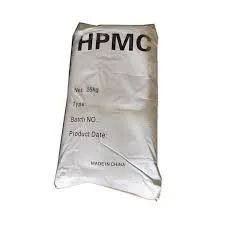
júl . 27, 2024 11:02 Back to list
Investigation of HPMC Solubility Characteristics in Various Organic Solvents for Enhanced Applications
Solubility of HPMC in Organic Solvents An Overview
Hydroxypropyl methylcellulose (HPMC) is a versatile cellulose ether widely used in various industries, including pharmaceuticals, food, and construction. Its unique properties, such as film-forming ability, thickening, and binding characteristics, make it an essential component in many formulations. When it comes to the solubility of HPMC, understanding its behavior in organic solvents is crucial for optimizing its applications.
HPMC is primarily soluble in polar solvents, particularly water. However, its solubility in organic solvents is of interest due to its implications in various formulations, such as controlled drug delivery systems and enhanced coating processes. Organic solvents such as ethanol, methanol, and acetone are commonly used in industrial applications. The interaction between HPMC and these solvents can significantly influence its properties and performance in formulations.
Solubility of HPMC in Organic Solvents An Overview
Molecular weight also plays a pivotal role in determining HPMC's solubility. Lower molecular weight HPMC is generally more soluble in organic solvents than its high molecular weight counterparts due to the reduced entanglement of polymer chains. This characteristic can be particularly important during the processing of drug formulations, where the solubility and viscosity of HPMC can significantly impact the release profile of the active pharmaceutical ingredient (API).
hpmc solubility in organic solvents

Temperature has a significant effect on the solubility of HPMC in organic solvents. As temperature increases, the kinetic energy of the solvent molecules also rises, facilitating the dissolution process. However, the solubility curve can be complex, as it may vary depending on the specific solvent and the concentration of HPMC used. For practical applications, understanding the temperature-solubility relationship is crucial for optimizing formulation conditions.
Moreover, the choice of organic solvent is critical for maximizing the solubility of HPMC. While many polar organic solvents can dissolve HPMC to some extent, some solvents may interact more favorably with HPMC chains and enhance compatibility. For instance, ethanol has been found to be a particularly effective solvent for dissolving HPMC, making it suitable for applications in pharmaceutical coatings and as a binder in solid dosage forms.
In practical applications, the solubility of HPMC in organic solvents can lead to the development of more efficient drug delivery systems. When combined with various APIs, the solubility characteristics of HPMC can influence the release rates and bioavailability of the drugs. Tailoring the solubility properties of HPMC through the careful selection of solvents and formulation parameters can ultimately enhance therapeutic outcomes.
In conclusion, the solubility of hydroxypropyl methylcellulose in organic solvents is a critical area of study for various industries. The degree of substitution, molecular weight, and temperature, along with solvent selection, all play significant roles in enhancing HPMC's functionality in applications. As researchers continue to explore new formulation strategies, understanding and manipulating the solubility of HPMC will remain central to developing innovative and effective products across diverse sectors.
-
The Widespread Application of Redispersible Powder in Construction and Building Materials
NewsMay.16,2025
-
The Widespread Application of Hpmc in the Detergent Industry
NewsMay.16,2025
-
The Main Applications of Hydroxyethyl Cellulose in Paints and Coatings
NewsMay.16,2025
-
Mortar Bonding Agent: the Key to Enhancing the Adhesion Between New and Old Mortar Layers and Between Mortar and Different Substrates
NewsMay.16,2025
-
HPMC: Application as a thickener and excipient
NewsMay.16,2025
-
Hec Cellulose Cellulose: Multi functional dispersants and high-efficiency thickeners
NewsMay.16,2025







